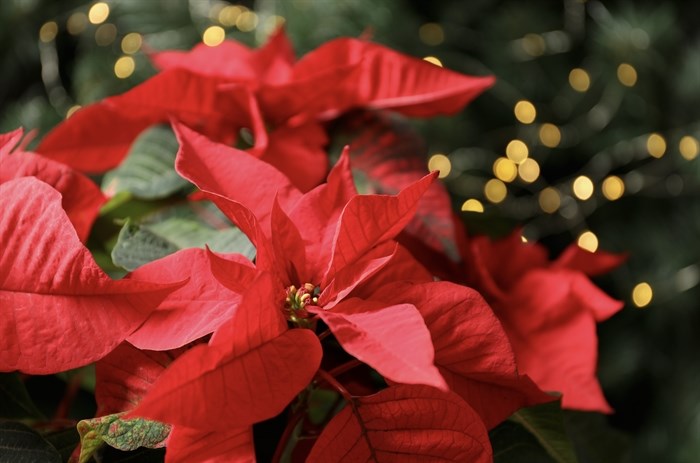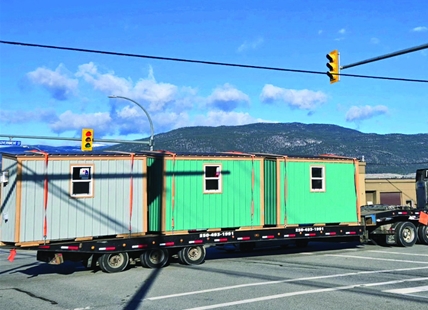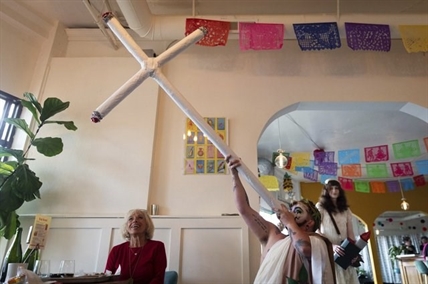Not so fast: You could toss your poinsettias, or help them 'bloom' again next year
I tend to view holiday decorations strictly as anticipatory objects. They’re lovely leading up to the big day, but as soon as midnight strikes, I’m ready to drag the Jack-O-Lantern or Christmas tree to the curb.
Not so with poinsettias, however.
The red and white “flowering” beauties can be kept year-round. And with the proper care and attention, they’ll “rebloom” just in time for next year’s festivities. (I’ve used quotes around “flowering” and “rebloom” because, technically, poinsettias do neither. Those red or white “petals” aren’t what they seem. They’re actually bracts, which are colorful modified leaves. But let’s call them “flowers” here for simplicity’s sake).
Growing poinsettias as houseplants is pretty simple: Provide water, sunlight and occasional fertilizer, and they’ll be happy. Getting poinsettias to bloom again next December? is another story altogether. But if you’re up for a fun challenge, here’s how:
1. After the holidays, set plants in a sunny spot, watering as needed until the flowers fade, then stop watering.
2. When the plants drop their leaves and enter dormancy, lay the pots on their sides and place them in a cool, dark spot, such as in an unheated cellar, until April. Visit them periodically and spray lightly with water if their stems start to shrivel.
3. In April, prune 2 inches off the tip of each stem and reintroduce plants to their sunny spot in the living area of your home. Poinsettias thrive best in temperatures between 70-75 degrees during the day and 60-65 degrees at night. Keep the soil moist but not soggy.
4. If you’d like to move the plants outdoors for summer, wait until the danger of frost has passed, then transition them gradually by increasing their outdoor exposure over a few days. Otherwise, continue to care for them as houseplants. Either way, begin feeding monthly with one teaspoon of a 20-20-20 fertilizer per gallon of water.
5. Bring vacationing poinsettias back indoors at the beginning of September, first checking for insects and rinsing plants and pots with a gentle stream of water.
6. In order to flower, poinsettias require a 40-day period of complete darkness for 15 hours daily. So, beginning on Oct. 1, keep plants in a bright, sunny spot from 8 a.m. to 5 p.m. every day, then move into a dark place, such as a closet, from 5 p.m. to 8 a.m. Alternatively, you could place a box over the plant during those hours. Either way, set an alarm – if you skip this step even once, buds may not form.
7. When bracts begin to take on a reddish (or white) hue, typically around the second week of November, start keeping plants in the main part of the house full-time. Continue to water and fertilize, and place your poinsettias in a prominent spot among your holiday decorations.
You may be exhausted, but you’ll have a great story to tell around the table.
— Jessica Damiano writes regular gardening columns for the AP and publishes the award-winning Weekly Dirt Newsletter.










